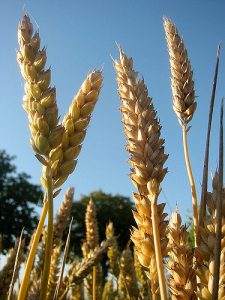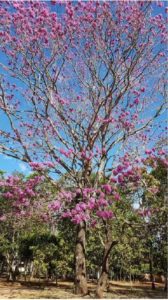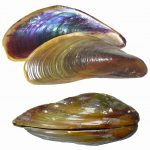… and a Happy New Year
The year is almost over and it’s time to review the highlights of GigaScience’s 2017.

“Draft genome of the reindeer (Rangifer tarandus)”
Foto: Alexandre Buisse CC-BY-SA 3.0
2017 was as special year for GigaScience: a year of many firsts and we celebrated our 5th birthday! An occasion to look back – and forward, as we did in our anniversary editorial. We marked the completion of our first five years in Prague, at ISMB, the same meeting where GigaScience first came to life in 2012. Czech beer, cake and our amazing guests (mainly recruited ad hoc from the BOSC track), all coming together on a summer evening in a corner pub in Prague: those were the ingredients for a truly memorable birthday party. Thanks again to all our guests for a special evening. We hope to see you all again in 2022 for our 10th birthday party, wherever that will take place!
Apart from celebrating, we also were one of the sponsors of the BOSC track at ISMB, and were happy to witness that the Open Science movement is in excellent health.
Thanks to all the brilliant people who came and celebrated our 5th birthday at #ISMBECCB tonight pic.twitter.com/4MOMfAWfIe
— GigaScience (@GigaScience) July 23, 2017
Going forward with OUP
2017 was the first year with our new publisher, Oxford University Press. During the transition, quite a lot of chores needed to be done behind the scenes to continue the smooth running of the journal. We are looking forward to further grow our radical open review, open data, open science approach with our new publishing partner in 2018 and beyond.
GigaScience Competition and Prize Track

“The first near-complete assembly of the hexaploid bread wheat genome, Triticum aestivum“
Foto: D. Endresen CC-BY 2.0
Another highly memorable event this year was the International Conference on Genomics (ICG) meeting in Shenzhen in October. For the 7th consecutive year we’ve attended our co-publisher BGI’s annual meeting, but this year we had a first: Our first ever competition and prize track, to promote new, cutting edge research.
Six GigaScience authors were given free registration, accommodation and travel to present their work. Among the strong contenders for the prize was a massively improved, near complete wheat genome that made waves also beyond the wheat community. But as competitions go, there could be only one winner, and the jury awarded the first prize to Taras Oleksyk, who presented work on the genome of a rather unique mammal, Solenodon paradoxus from the island of Hispaniola. Watch Oleksyk’s award-winning presentation, and all the other talks of the prize track, on our Youtube channel.
For the prize track we also experimented with real-time open peer review. All reviews at GigaScience are open after publication, but for the ICG event we went one step further, in collaboration with our friends at AcademicKarma. Reviews could be followed and contributed in real time via a special page. Transparent peer review is a topic we are particularly interested in, of course. As our contribution to Peer Review Week, we co-hosted a webinar, discussing preprints and open peer review with AcademicKarma.
Some favorite articles

“A high-coverage draft genome of the mycalesine butterfly Bicyclus anynana.”
foto credit: William H. Piel and Antónia Monteiro
Only a subset of articles could be presented within the timeframe of the ICG prize track. Other highlights published last year once again include some high quality genome assemblies. GigaScience continues to be a favorite journal for advanced plant genomics, showcasing cutting edge technology to improve assemblies; as evidenced not only by the new wheat assembly mentioned above, but also by a recent article on a improved assembly of the wild strawberry genome, using a combination of optical maps and long reads.
In the animal department, we could not possibly write a mid-December blog post without mentioning the reindeer genome published recently, also featured on GigaBlog.
Moving on to the insect world, we published the genome of Bicyclus anynana, a charismatic butterfly and important model in evolution and ecology due to its seasonal morphological varieties. The data note (with supporting data in GigaDB, as always) will help to better understand this unusual developmental switch.
We also featured an arachnid species: The parasitic Tropilaelaps mercedesae threatens bee colonies in Asia, and the genome sequence, published in GigaScience, reveals some interesting features, including traces of horizontal gene transfer from bacteria, as the authors explained in a GigaBlog Q&A.
FAIR everything
A certain four letter acronym was mentioned a lot wherever Open Science was discussed in 2017, including BOSC and also the recent FORCE 2017 meeting in Berlin:
FAIR – Findable, Accessible, Interoperable, Reproducible. First drafted in 2015, there is wide agreement now that these principles are a very good idea – but how to put FAIR into practice? Javier Quilez and colleagues showed in a didactical GigaScience commentary how best practice can look like for a sequencing project (and what errors are best avoided).
Our radical approach to openness and sharing would not have been possible without the help of our reviewers, who agree to sign and publish their reports and also take extra care that data and methods are supporting the submissions. Thank you for your dedication and your continued support!
Although we were quite busy in the first half of the year with the transition to our new publisher OUP, we also introduced a few technical novelties:
BioRxiv integration

“Genome assembly of the Pink Ipê”
Not long ago posting unreviewed versions of research articles online was seen as an avant-garde and slightly iffy thing to do as a biomedical researcher, but preprints are becoming the new normal in the life sciences. We always had supported preprints, we encourage our authors to cite them and of course we never hold it against authors if they post a preprint of their work prior to submitting to us.
To make it even easier to submit bioRxiv preprints, we now offer a shortcut connecting bioRxiv and GigaScience.
Code Ocean
In addition to our integration with bioRxiv, Publons and protocols.io, we also experimented with the code sharing platform Code Ocean. Code Ocean takes reproducible code to a new level. Authors can upload code and data in ten programming languages and Code Ocean provides an interactive “Compute Capsule”. They also assign a Digital Object Identifier (DOI) to the algorithm, that allows the algorithm to be cited in the reference sections of papers. See this paper by Ruibang Luo and colleagues, and the Code Ocean entry cited therein, for an example how GigaScience-style open data publishing ties in with Code Ocean’s reproducible software capsules.
What do our authors think of this experiment? Ruibang Luo is as excited as we are:
“I think Code Ocean is awesome and I would like to use it for my future projects and I would like to recommend my colleagues.”
RRIDs
Another software-related innovation you may have come across in the methods sections of our papers are “Research Resource Identifiers” (RRIDS) we are encouraging our authors to include.
The variety of software tools and databases used in life science projects can get bewildering, and RRIDs are a handy way to keep track of the tool zoo. Due to the standardized format, RRIDs mentioned in our papers are machine-readable, allowing for example annotation bots to enhance and extract information automatically.

“A hybrid-hierarchical genome assembly strategy to sequence the invasive golden mussel Limnoperna fortunei.”
Foto:Boltovskoy/ CC-BY-SA
Citizen Science at the UN in Nairobi
In November, our executive editor Scott Edmunds was on a diplomatic mission in Nairobi, Kenya: Before the main UN Environment Assembly, a Science-Policy-Business Forum on the Environment took place, and as part of this policy forum Scott participated in discussions around Citizen Science, also representing Citizen Science Asia. The gathering has set aim at promoting citizen science across the globe – and we will continue to do our bit. Just now, we published the genome assembly of the golden mussel Limnoperna fortunei, an invasive species. Following a Community Genomics approach that we’ve been promoting since our Puerto Rican “peoples” parrot genome, the project was supported in part by crowfunding and also an exercise in public participation, as first author Marcela Ulioano da Silva explains.
We Love CUDDEL(s) and BYO Data & Workflow Parties
Some of you may recall our BBSRC UK-China partnering award funded BYO Data party in our Hong Kong office in 2014 and thanks to the positive outcome, last month we hosted another hackathon in Hong Kong made possible with a second BBSRC grant that we’ve called CUDDEL (‘China-UK Data Dissemination in Metabolomics’. This year the focus was on reproducible metabolomics workflows, and 19 participants squeezed in our office from the ISA Team at the Oxford e-Research Centre, the EBI, the Universities of Birmingham, Manchester (Common Workflow Language), The Sainsbury Laboratory, BGI and the University of Melbourne. The Oxford e-Research Centre has already blogged on this, and follow our blog to see how things progress from this event.
More hands on deck at GigaDB
And finally, very good news for our repository GigaDB: Our data curators Chris and Jesse got much needed help to curate the growing volume of data submitted to GigaDB. Please welcome our new data curators Mary Ann Tuli and Chris Armit. The bigger GigaScience team is prepared for your submissions and another exciting year of open science publishing.
We wish all our readers, authors, reviewers and editorial board members a Happy New Year!
